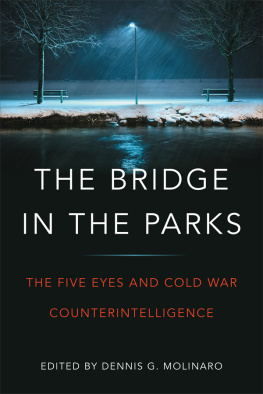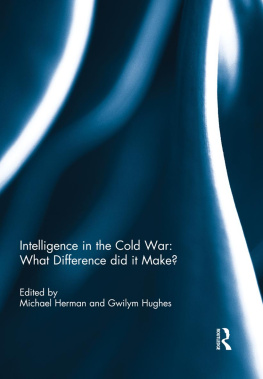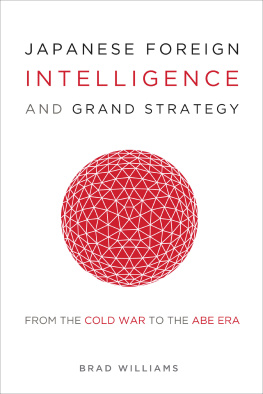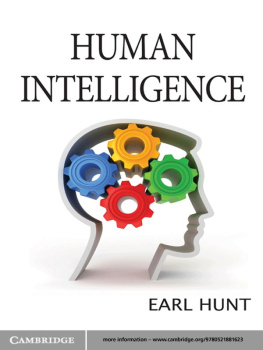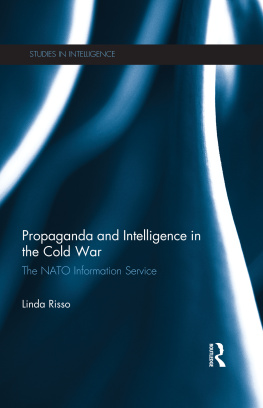Landmarks

THE BRIDGE IN THE PARKS
The Five Eyes and Cold War Counter-Intelligence
Edited by Dennis G. Molinaro
Established in the 1940s, the Five Eyes intelligence network consists of Australia, Britain, Canada, New Zealand, and the United States. The alliance was integral to shaping domestic and international security decisions during the Cold War, yet much of the intelligence history of these countries remains unknown. In The Bridge in the Parks, intelligence scholars from across the Five Eyes come together to present case studies detailing the varied successes and struggles their countries experienced in the world of Cold War counter-intelligence.
The case studies draw on newly declassified documents on a variety of topics, including civil liberties, agent handling, wiretapping, and international relations. Collectively, these studies highlight how Cold War intelligence history is more nuanced than it has often been portrayed and much like in the world of intelligence, nothing is ever entirely as it seems.
DENNIS G . MOLINARO is an author and researcher with a PhD in history from the University of Toronto.
The Bridge in the Parks
The Five Eyes and Cold War Counter-Intelligence
EDITED BY DENNIS G. MOLINARO
UNIVERSITY OF TORONTO PRESS
Toronto Buffalo London
University of Toronto Press 2021
Toronto Buffalo London
utorontopress.com
Printed in the U.S.A.
ISBN 978-1-4875-0512-7 (cloth)
ISBN 978-1-4875-2371-8 (paper)
ISBN 978-1-4875-3163-8 (EPUB)
ISBN 978-1-4875-3162-1 (PDF)
Library and Archives Canada Cataloguing in Publication
Title: The bridge in the parks : the Five Eyes and Cold War counter-intelligence / edited by Dennis G. Molinaro.
Names: Molinaro, Dennis G., editor.
Description: Includes bibliographical references.
Identifiers: Canadiana (print) 20210191147 | Canadiana (ebook) 20210191155 | ISBN 9781487505127 (hardcover) | ISBN 9781487523718 (softcover) | ISBN 9781487531621 (PDF) | ISBN 9781487531638 (EPUB)
Subjects: LCSH: Five Eyes (Alliance) | LCSH: Intelligence service History 20th century. | LCSH: Cold War.
Classification: LCC JF1525.I6 B75 2021 | DDC 327.12 dc23
This book has been published with the help of a grant from the Federation for the Humanities and Social Sciences, through the Awards to Scholarly Publications Program, using funds provided by the Social Sciences and Humanities Research Council of Canada
University of Toronto Press acknowledges the financial assistance to its publishing program of the Canada Council for the Arts and the Ontario Arts Council, an agency of the Government of Ontario.

For Nichole, Leonardo, and Andre
A certain friendly rivalry has developed. They are trying to ruin our universe; we are trying to ruin theirs. Of course, we could probably tamper with its atomic structure, we might even try that in a couple of hundred years or so. However, at the moment we are concentrating on the destruction of that small part of its spiritual structure which has so far become apparent to the mind of man. The attack is more subtle, more satisfying. Certainly more civilized.
Peter Dwyer, Hoodman Blind
Eyes without feeling, feeling without sight,
Ears without hand or eyes, smelling sans all,
Or but a sickly part of one true sense
Could not so mope.
William Shakespeare, Hamlet
There is perhaps no more pleasant pastime than that of listening to the conversations of other people. There are, of course, those lucky few who can place their ear at the keyhole without any moral qualms; but these superhuman creatures are few and far between There are places where one has excellent opportunities for this fascinating method of listening in; cocktail parties, for instance but this is most half-hearted eavesdropping, for your real eavesdropper gives his complete and undivided attention to the matter And your honestly disinterested listener could do no better than to take up his station on the top of the bridge in the parks. Here he can overhear the most delightful snatches of talk Here he can meditate on humanity.
Peter Dwyer, The Bridge in the Parks
Contents
Foreword
The Cold War came to a stuttering close in 1989 and the early 1990s. A brief, formless post-Cold War era was then succeeded in 2001 by the global war on terror in which the long-term national antagonism Soviet Russia and China on one side and the US-led Western alliance on the other gave way to a conflict zone between states and violent non-state actors. By the end of the second decade of the twenty-first century it had become apparent that tensions and antagonisms between post-Soviet Russia and China and Western nations had hardly disappeared, indeed were resurgent, but they no longer followed the fundamentalist ideological divisions of the 19451989 era when totalitarian communism faced off against liberal democratic capitalism.
Scholars can now look back at the Cold War era as one with a historical starting point and an end date, even if the precise timing of beginning and closing is still open to debate. Scholars are now able to examine much more closely than before one crucial area of the Cold War: the role of security and intelligence. The threat of mutual nuclear annihilation closed off options for direct military confrontation between the communist world and the West, the closest brush with Armageddon coming with the Cuban missile crisis of 1962, a deeply sobering experience for both blocs. Bloody proxy wars were waged in Asia and Africa, but direct conflict was avoided, leaving much of the Cold War to be fought by security and intelligence agencies operating in the shadows. As long as the Cold War continued, these shadows were rigorously maintained to evade the scrutiny of inquiring scholars. Protection of national security trumped the search for historical truth. Often what did emerge in journalistic and scholarly inquiries into Cold War espionage and counter-espionage were narratives highly critical of the official line, distrust of authorities being inflamed by the conflictual process of extracting documentary evidence, and suspicions, often quite warranted, of official cover-ups and dissembling.
Now that a generation has passed since the fall of the Berlin Wall, scholarly inquiry into the security and intelligence history of the Cold War has entered into a new and more fruitful time of much greater access to previously secret records (although access is far from complete even now). Scholars today can assume a greater critical distance from the events and personalities they investigate, and benefit from the greater appreciation of the overall context of the Cold War than was available when the Cold War was a current event rather than history. This permits greater objectivity in assessing the behaviour of the security and intelligence agencies and the impact that their operations had upon their own societies and political systems, as well as their performance in the global competition with their adversaries, than was often possible in an earlier era of more politically engaged research.
The present volume offers a taste of what contemporary Cold War scholarship has to offer, especially from a Canadian perspective. The articles assembled here by editor Dennis Molinaro provide a series of revealing snapshots into the Anglosphere of the Cold War intelligence community, what today has come to be known as the Five Eyes, that has survived the end of the Cold War era as a durable intelligence alliance in the twenty-first century. By the mid-1950s the United States had assumed such a hegemonic position in the Western bloc that lesser powers like Canada tended to be seen as mere adjuncts of US power. Forgotten is the influential role that Britain still played among its former imperial possessions Canada, Australia, and New Zealand particularly in the realm of intelligence where Britain had come out of the war with high prestige for its successes in counter-intelligence and codebreaking against Nazi Germany, while the United States was still struggling with the transition from the wartime OSS to the CIA. The first great Cold War intelligence battle was fought in Canada, with the defection of Soviet cipher clerk Igor Gouzenko in 1945 and the revelation of extensive spying operations by the Soviets against their wartime allies. We now know that the most influential external voice in shaping the Canadian response to the Gouzenko defection was that of British intelligence.

